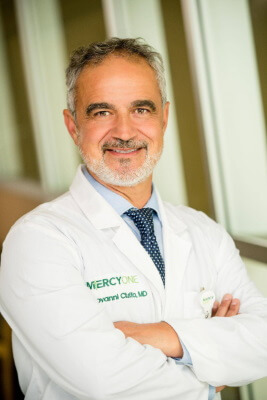Congenital heart problems are challenging for parents and doctors alike. Six babies in every 1,000 are born with atrial septal defects. Fortunately, Dr. Ciuffo’s advanced techniques and technology help reduce the risks of corrective heart surgery in infants.
What is Atrial Septal Defect?
The human heart is made up of four distinct chambers. Blood enters the chambers and is circulated through the lungs, back out into the body carrying oxygen and other important nutrients. The division between the top two chambers is called the atrial septum. A hole in the septum allows oxygen rich blood entering from the lungs, and oxygen poor blood being sent out to the lungs to mix. This decreases the efficiency with which the heart is able to deliver oxygen rich blood to the body, and sends a higher volume of blood into the lungs.
What are the Signs of ASD?
A child with ASD may exhibit a number of symptoms. The most well-known symptom is a “whooshing” sound accompanying the heartbeat, sometimes called a “heart murmur.” Other symptoms include poor appetite, failure to grow or thrive, extreme fatigue, difficulty breathing or shortness of breath, and lung infections. Untreated, ASD can lead to arrhythmia and a higher risk for stroke. The earlier treatment is pursued, the more likely the child will live a full and normal life.
ASD Repair in Infants
While some smaller ASDs may naturally repair themselves over time, others may require surgical intervention. In cases which require surgery, there are a few options. The catheter method involves inserting a long, flexible tube under general anesthesia through the groin area. The tube is threaded up to the heart, and used to insert a tiny device that effectively plugs the hole. Over time, the heart’s natural tissue will grow over the device, anchoring it into place.
Dr. Ciuffo offers an alternative option. A tiny incision between the ribs allows him to enter the heart cavity and, using sutures or the patient’s own tissue, patch the hole. This method offers the advantage of no foreign objects left behind.
If you or someone you love has a child with ASD, contact Dr. Ciuffo for a full evaluation.

